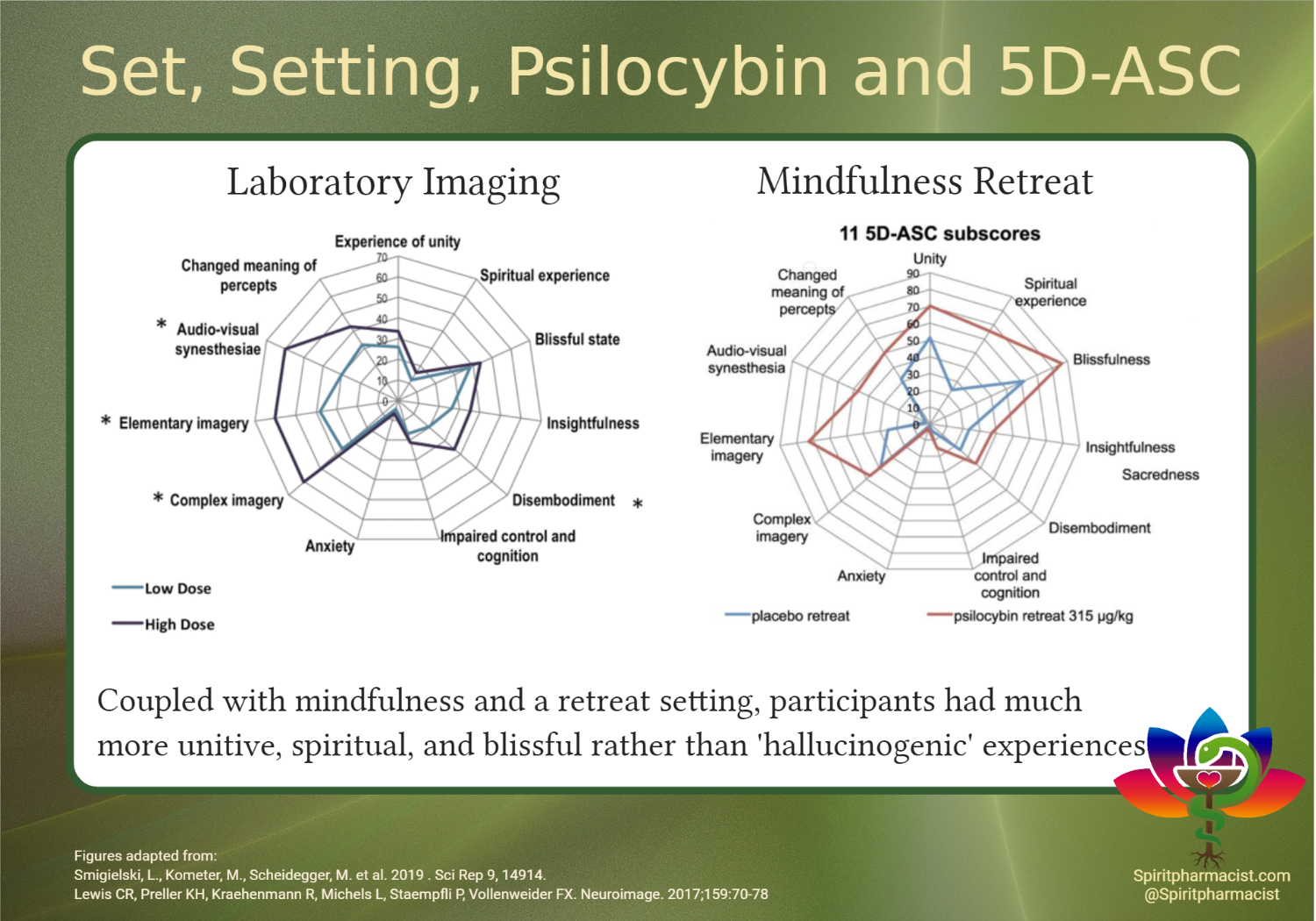One common question that is often asked is how the subjective experiences of different psychedelic tryptamines compare to one another. It’s an important question to consider because there are distinct differences in the subjective effects induced by various psychedelics.
In this video, we will focus on four psychedelic tryptamines: N,N-DMT, psilocybin, LSD, and 5-MeO-DMT. These substances were chosen due to their popularity and the availability of data and information to compare and contrast their effects.
On one end of the subjective experience spectrum is N,N-DMT, also known as “the spirit molecule.” It is known for producing intense hallucinogenic and interactive-relational effects [1]. When using N,N-DMT, individuals often report vivid and complex visual imagery, as well as a sense of an otherworldly presence or entity [2]. With higher doses of inhaled N,N-DMT, reports of encounters with deities or extraterrestrials are common, while oral consumption of N,N-DMT in the form of ayahuasca may evoke a connection with the “spirit of ayahuasca” or “mother ayahuasca.”
On the other end of the spectrum is 5-MeO-DMT, also referred to as “the God molecule.” This substance is characterized by a profound sense of oneness or unity, often described as a non-dual experience where the boundaries between self and the external world dissolve [3, 4]. While hallucinogenic effects may be present during the initial minutes of the experience, they are typically minimal compared to other tryptamines.
Substances like psilocybin and LSD fall somewhere in the middle of the spectrum, exhibiting elements of both hallucinogenic and entheogenic effects. While entities, such as “machine elves” or extraterrestrials, have been reported with psilocybin use, it is also being studied for its ability to induce non-dual mystical experiences in clinical settings [5-7]. Currently, there seems to be little difference in the subjective effects of LSD and psilocybin based on available research [8]. What determines whether psilocybin behaves more like a hallucinogen or an entheogen is still unknown, but it may be influenced by factors such as set and setting. For example, neuroimaging experiments conducted in different settings have shown varying degrees of hallucinogenic and entheogenic effects associated with psilocybin [9, 10].

It is still not fully understood how subjective effects contribute to the therapeutic use of psychedelics. Different substances and experiences may offer unique therapeutic benefits. Additionally, the specific structural and pharmacological characteristics of each psychedelic tryptamine that lead to the diverse range of effects remain to be discovered. However, regardless of the tryptamine used, experiences characterized as “God encounters” or encounters with “Ultimate Reality” have a profound and long-lasting impact on an individual’s beliefs and are often considered among their most significant life experiences [11].
References
- Strassman, R.J., Human psychopharmacology of N,N-dimethyltryptamine. Behav Brain Res, 1996. 73(1-2): p. 121-4.
- Davis, A.K., et al., Survey of entity encounter experiences occasioned by inhaled N,N-dimethyltryptamine: Phenomenology, interpretation, and enduring effects. 0(0): p. 0269881120916143.
- Davis, A.K., et al., The epidemiology of 5-methoxy- N, N-dimethyltryptamine (5-MeO-DMT) use: Benefits, consequences, patterns of use, subjective effects, and reasons for consumption. J Psychopharmacol, 2018. 32(7): p. 779-792.
- Barsuglia, J., et al., Intensity of Mystical Experiences Occasioned by 5-MeO-DMT and Comparison With a Prior Psilocybin Study. Front Psychol, 2018. 9: p. 2459.
- Griffiths, R.R., et al., Psilocybin can occasion mystical-type experiences having substantial and sustained personal meaning and spiritual significance. Psychopharmacology (Berl), 2006. 187(3): p. 268-83; discussion 284-92.
- Griffiths, R., et al., Mystical-type experiences occasioned by psilocybin mediate the attribution of personal meaning and spiritual significance 14 months later. J Psychopharmacol, 2008. 22(6): p. 621-32.
- Griffiths, R.R., et al., Psilocybin-occasioned mystical-type experience in combination with meditation and other spiritual practices produces enduring positive changes in psychological functioning and in trait measures of prosocial attitudes and behaviors. J Psychopharmacol, 2018. 32(1): p. 49-69.
- Holze, F., et al., Direct comparison of the acute effects of lysergic acid diethylamide and psilocybin in a double-blind placebo-controlled study in healthy subjects. Neuropsychopharmacology, 2022.
- Smigielski, L., et al., Characterization and prediction of acute and sustained response to psychedelic psilocybin in a mindfulness group retreat. Sci Rep, 2019. 9(1): p. 14914.
- Lewis, C.R., et al., Two dose investigation of the 5-HT-agonist psilocybin on relative and global cerebral blood flow. Neuroimage, 2017. 159: p. 70-78.
- Griffiths, R.R., et al., Survey of subjective “God encounter experiences”: Comparisons among naturally occurring experiences and those occasioned by the classic psychedelics psilocybin, LSD, ayahuasca, or DMT. PLoS One, 2019. 14(4): p. e0214377.
Join the Spirit Pharmacist Mailing List
Stay in touch to receive updates on new blogs, courses, special offers, and more. Don’t worry, your information will not be shared.


